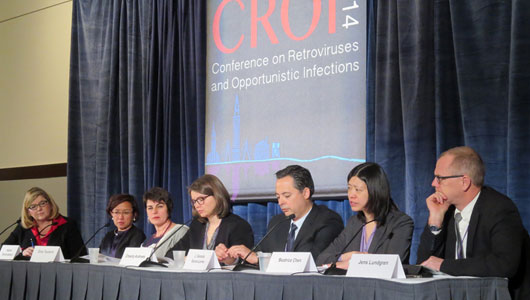
Press conference at CROI 2014. Photo by Liz Highleyman, hivandhepatitis.com.
What are the chances of someone with an undetectable viral load passing HIV on to a sexual partner? “Our best estimate is it’s zero” said investigators presenting research from the first two years of the PARTNER study, involving couples in which one partner has HIV and the other does not.
The ongoing PARTNER study has so far recruited 1110 couples where the partners have differing HIV status – and nearly 40% of them are gay couples.
The findings build on the results of the HTPN 052 study, which showed a 96% reduction in transmission when the HIV-positive partner in a couple starts treatment early. This study involved mostly heterosexual couples.
During follow-up in the PARTNER study, all the heterosexual HIV-negative partners reported having vaginal sex without condoms, 72% with ejaculation; 70% of the gay HIV-negative partners reported having receptive anal sex without condoms, 40% with ejaculation, while 30% reported only being the insertive partner. A significant proportion of the heterosexual couples reported anal sex.
The investigators estimated that the gay couples had sex on 16,400 occasions and the heterosexual couples on 14,000 occasions.
There were no cases of HIV transmission when viral load was below 200 copies/ml.
Statistical analysis showed that an undetectable viral load reduced the risk of transmission during vaginal sex by 99.5% and during anal sex by 99% (96% with ejaculation).
However, the researchers believe the true efficacy of treatment as prevention is likely to be nearer 100%, although, as the study’s principal investigator pointed out, it will probably never be possible to show with mathematical certainty that the risk of transmission from someone on successful HIV therapy is absolutely zero.



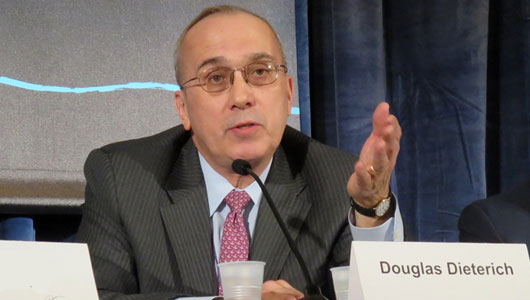
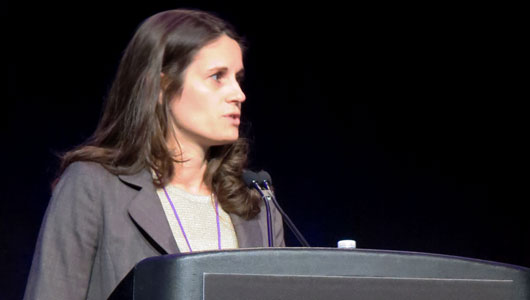
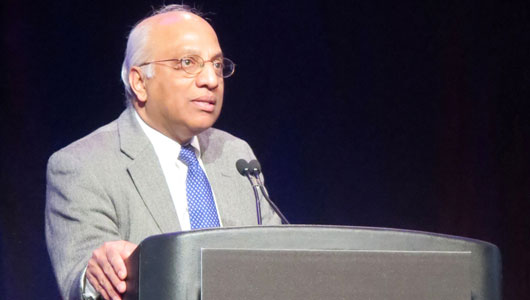
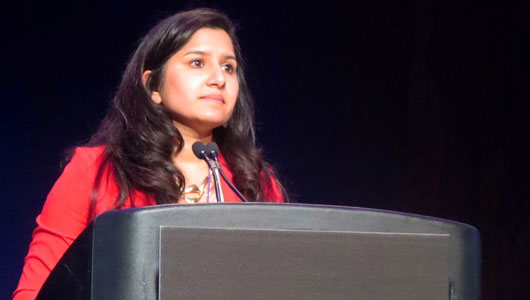
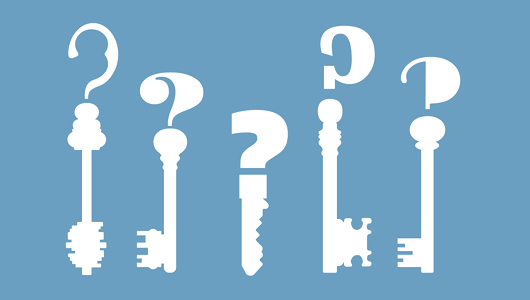
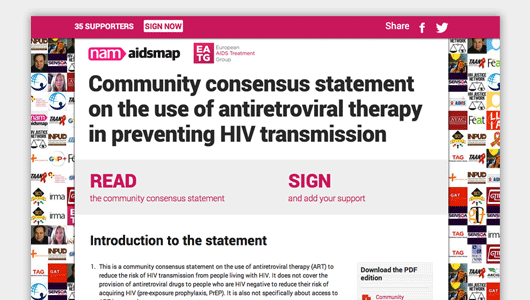

Connect with NAM on Facebook: Keep up to date with all the exciting projects, latest achievements and new developments that are going on in the world of NAM.
Follow NAM on twitter for links to hot off the press news stories from our editors covering key developments and conferences as they happen. Our news feed is linked to www.twitter.com/aidsmap_news and we also tweet from www.twitter.com/aidsmap.
Follow all the conference news by subscribing to our RSS feeds.